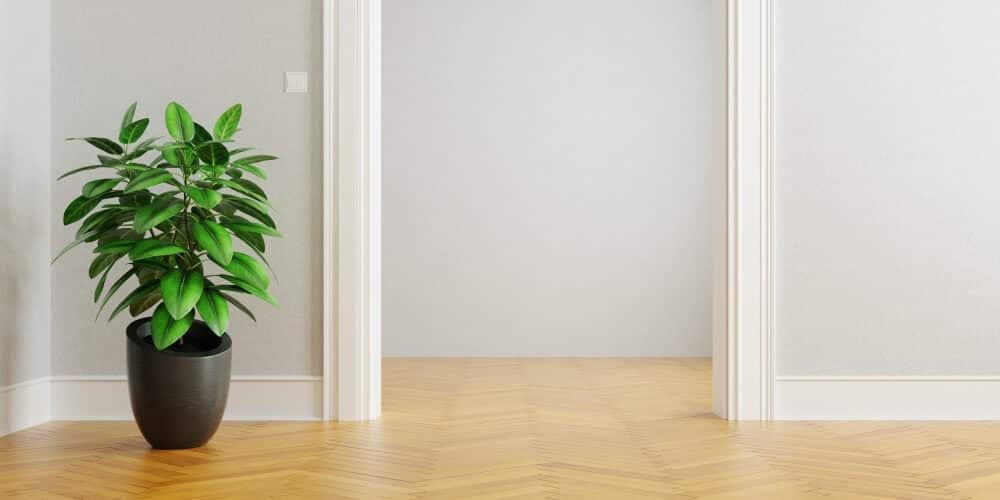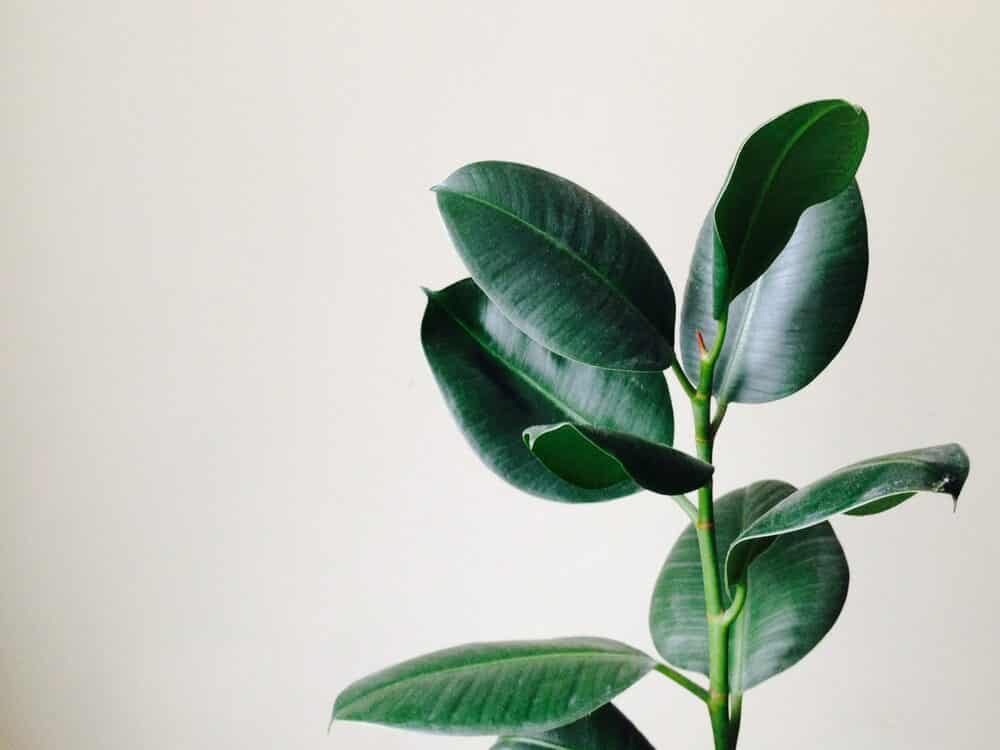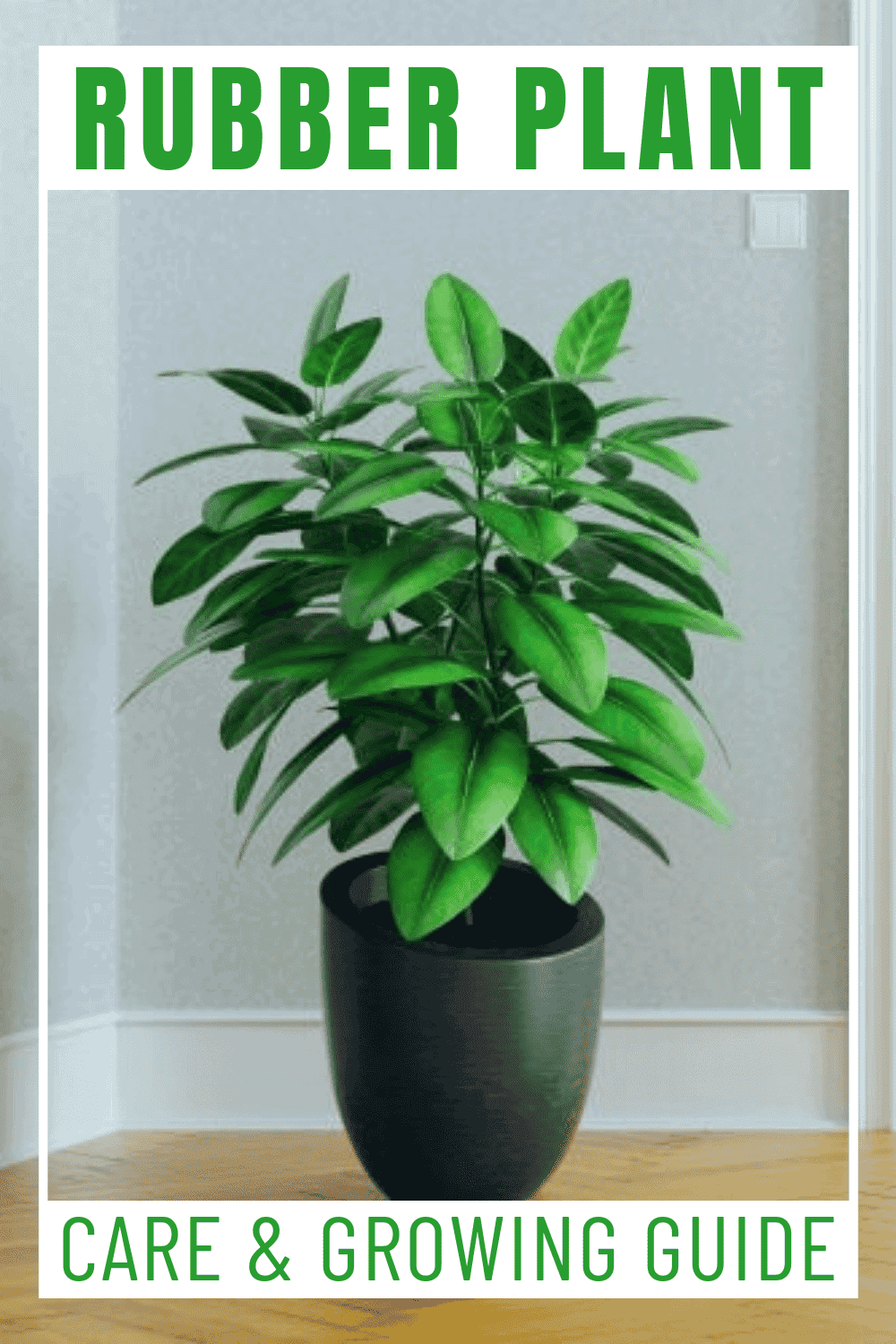Rubber plants, also known as rubber figs, are wild-growing desert plants that can reach up to a hundred feet long.
Rubber plant Care & Growing Guide
1. Light Requirement
If your rubber plant is indoors, do not put the rubber plant in direct sunlight. The sun’s rays are too strong. Place the plant in a room with a lot of indirect sunlight, like near a window. You’ll know your rubber plant needs more light if it’s leaves lose their shine, and the lower leaves are starting to fall off. If it is outdoors, it needs several hours of sunlight a day.
2. Water
Watering a rubber plant can be a bit tricky, as each season has its own watering requirements. During the summer, the plant should be kept moist; even the leaves should be moistened. Spray the plant’s leaves with a spray bottle or set it near a humidifier. During the winter, however, when it is dormant season, only need to water the rubber plant twice a month. You can tell if you are not watering it enough if the leaves turn yellow or brown and fall off.
3. Climate and temperature
Rubber plants absolutely do not like the cold, so people who live in cold areas keep them as houseplants. It is only in zones 10 and 11 that you can grow rubber plants outdoors. Other than that, keep them inside your home or in a greenhouse.
4. Soil
This plant does not like too much water, so make sure the soil drains well. Add some peat moss to a container of soil to improve the drainage. Letting a rubber plant sit in stagnant water will cause several diseases that affect its roots.

5. Should I fertilize my rubber plant?
Unlike most plants, the growing season for the rubber plant is during summer. It is during this time that the plants should be fertilized. Use a mixture of nitrogen, phosphorus, and potassium in a gallon of water and water the rubber plant with this mix every 3 to 4 weeks.
6. How to repot the rubber plant
When it is time to repot a rubber plant, you will see the roots popping out from the top of the soil. To avoid transplant shock, repot the plants around late winter or early spring.
Get a pot that is two sizes larger than its current pot and fill it halfway with soil. Make sure the soil drains well. You can add rocks to the bottom to improve drainage. The rubber plant will be hard to remove from its current pot, so you have to water it to get it out. Once it’s out, place the plant into the new pot and slowly build around it with potting soil. Then soak the plants until water drains out from the bottom.
7. Speed of Growth
In a single growing season, the rubber tree can gain more than two feet in height. It is a very fast-growing plant, so gardeners must stay on it and trim it often.
8. Height and Width of the plant
The rubber plant can grow a hundred feet tall when it’s outside and undisturbed, but many people keep it from 1 to 8 feet tall. It’s width usually ranges from three to eight feet.
9. Trimming
The rubber tree grows wildly if it’s not cared for. The growing speed is why many people use them as hedges in their gardens. You can trim the plant at any time of the year, but early summer, sometime around June, is best. To trim a rubber plant, cut off any wild branches or clusters of leaves that aren’t growing in the direction they should be. Make sure to cut the stem or branch right before a node, so that the leaves keep growing.

10. How do I propagate a Rubber plant?
You can propagate the rubber plant by cutting leaf buds. Make sure your instruments are sterilized before you cut into the plant.
To use a leaf buds to propagate, cut off a stem that starts one to two inches above the soil. Remove any new growth from the top of the stem, then cut the stem up and down halfway. Place the uncut side into a pot with soil and water it until moist. It will take six to eight weeks, but the plant will be rooted and will begin to grow.
Is the Rubber plant Poisonous?
Yes, the rubber plant can be poisonous to both humans and animals if they come into contact with the sap from the leaves and stems. If the sap gets on skin or fur, it can cause severe irritation. If the rubber plant is eaten, it can cause gastrointestinal problems and pain in the mouth. So, you should not have this plant near young children.
Can a rubber plant grow in water?
No, a rubber plant cannot grow in water. It does best when its soil is moist, but it will die if it’s soaked or over water.
Does this plant have flowers and how to get to Flower?
Yes, the rubber plant does have a flower, although it looks kind of odd. If your rubber plant is indoors, don’t expect to see it’s flower bloom in the spring. It almost never flowers indoors. If your rubber plant is an outdoor plant, you’re more likely to see it. To maximize the possibility of seeing the flower, make sure it has plenty of bright indirect light, and consistently keep the soil moist during the growing season. You should be able to see the flower by June.
Also read: Haworthia Cooperi Care & Growing Guide
Common Diseases
Spider mites are known to be attracted to the yucca plant and will attack it if it’s indoors or outdoors. The damage they cause is by sucking out material from stems, branches, and cells. Because they are so small, many people won’t notice the damage they’re doing until it’s too late.
Thripes are small green insects that can damage plants by sucking out their sap and juices from the stems and leaves. You know you have the thripes when the leaves turn pale and silvery and then die.
More like this: Sansevieria Moonshine Care & Growing Guide
Conclusion
- The rubber tree is part of the fig family.
- Its soil needs to be kept moist.
- It can grow two feet in a single growing season
- It has red flowers, but most people never see them.

Victoria is the owner and main author of hobby plants. She loves spending her free time in her garden planting and taking care of her plants. Victoria hopes you enjoy the content here!

![Mother Of Thousands Plant [Complete Plant Care Guide] Mother Of Thousands Plant [Complete Plant Care Guide]](https://www.hobbyplants.com/wp-content/uploads/2022/07/mother-of-thousands-plant-300x158.jpg)
![Majesty Palm Plant Care: [Complete Beginner's Guide] Majesty Palm Plant Care: [Complete Beginner's Guide]](https://www.hobbyplants.com/wp-content/uploads/2022/08/majesty-palm-care-300x158.jpg)
![Exotic Angel Plant Care: [Complete Beginner's Guide] Exotic Angel Plant Care: [Complete Beginner's Guide]](https://www.hobbyplants.com/wp-content/uploads/2022/08/exotic-angel-plant-care-300x158.jpg)
![Snow White Waffle Plant: [Complete Care Guide] Snow White Waffle Plant: [Complete Care Guide]](https://www.hobbyplants.com/wp-content/uploads/2022/08/snow-white-waffle-plant-300x158.jpg)
![Waffle Plant Care: [Complete Beginner's Guide] Waffle Plant Care: [Complete Beginner's Guide]](https://www.hobbyplants.com/wp-content/uploads/2022/08/waffle-plant-300x158.jpg)
![Bird Of Paradise Plant Care: [Complete Beginner's Guide] Bird Of Paradise Plant Care: [Complete Beginner's Guide]](https://www.hobbyplants.com/wp-content/uploads/2022/08/bird-of-paradise-plant-300x158.jpg)
![Purple Passion Plant Care: [Complete Beginner's Guide] Purple Passion Plant Care: [Complete Beginner's Guide]](https://www.hobbyplants.com/wp-content/uploads/2022/08/purple-passion-plant-care-300x158.jpg)
![China Doll Plant Care: [Complete Beginner's Guide] China Doll Plant Care: [Complete Beginner's Guide]](https://www.hobbyplants.com/wp-content/uploads/2022/09/china-doll-plant-care-300x158.jpg)
![Polka Dot Plant Care: [Complete Beginner's Guide] Polka Dot Plant Care: [Complete Beginner's Guide]](https://www.hobbyplants.com/wp-content/uploads/2022/09/polka-dot-plant-300x158.jpg)
![Mona Lisa Lipstick Plant Care: [Complete Beginner's Guide] Mona Lisa Lipstick Plant Care: [Complete Beginner's Guide]](https://www.hobbyplants.com/wp-content/uploads/2022/09/lipstick-plant-mona-lisa-300x158.jpg)
![Yucca Cane Plant Care: [Complete Beginner's Guide] Yucca Cane Plant Care: [Complete Beginner's Guide]](https://www.hobbyplants.com/wp-content/uploads/2022/09/yucca-cane-plant-care-300x158.jpg)